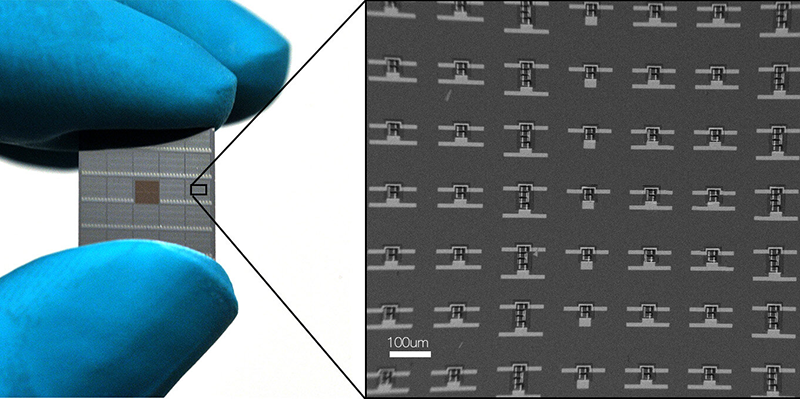
Scientists have created wireless bug-shaped microrobots using nanofabrication techniques that turns a 4-inch specialized silicon wafer into a million microscopic robots in just weeks. The microbots, developed by University of Pennsylvania researchers, can walk, survive in harsh environments, and are tiny enough to be injected through an ordinary hypodermic needle, that they may have potential as injectable drug-delivery devices.
Related How Microneedle Systems Could Provide Safe, Effective and Painless Drug Delivery
Over the course of the past several years, Marc Miskin, and his colleagues, professors Itai Cohen and Paul McEuen and researcher Alejandro Cortese at Cornell University, developed this multistep nanofabrication technique. Each 70 micron long (about the width of a very thin human hair), the robots’ bodies are formed from a superthin rectangular skeleton of glass topped with a thin layer of silicon into which the researchers etch its electronics control components and either two or four silicon solar cells — the rudimentary equivalent of a brain and organs.
“The really high-level explanation of how we make them is we’re taking technology developed by the semiconductor industry and using it to make tiny robots,” said Miskin.

Each of a robot’s four legs is formed from a bilayer of platinum and titanium (or alternately, graphene). The platinum is applied using atomic layer deposition. “It’s like painting with atoms,” said Miskin. The platinum-titanium layer is then cut into each robot’s four 100-atom-thick legs.
“The legs are super strong,” he said. “Each robot carries a body that’s 1,000 times thicker and weighs roughly 8,000 times more than each leg.”
Related Vaxxas Nanopatch is Novel, Cost Effective and Safe Vaccine Delivery System
The current laser power source would limit the robot’s control to a fingernail-width into tissue. So Miskin is looking for other energy sources, including ultrasound and magnetic fields, that would enable these robots to make incredible journeys inside the human body for drug delivery or mapping the brain.
“We found out you can inject them using a syringe and they survive — they’re still intact and functional — which is pretty cool,” he said.











